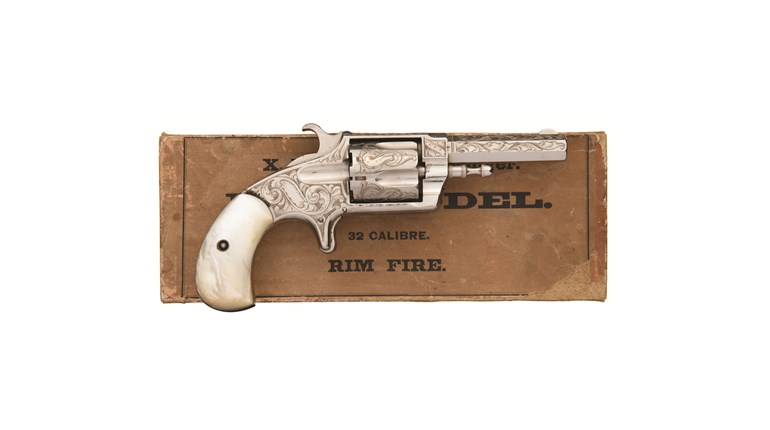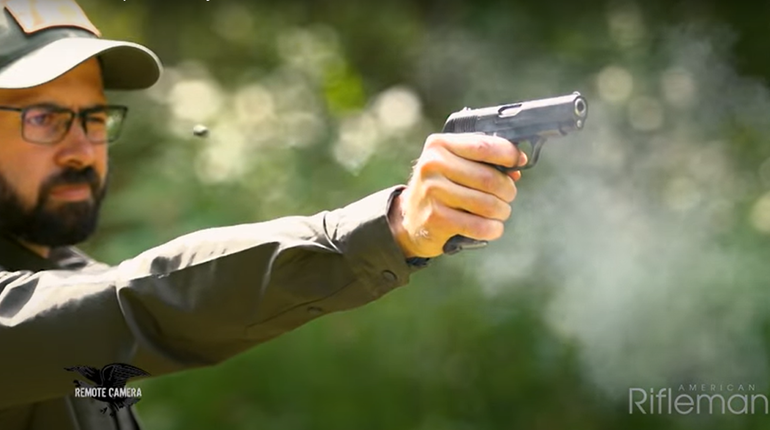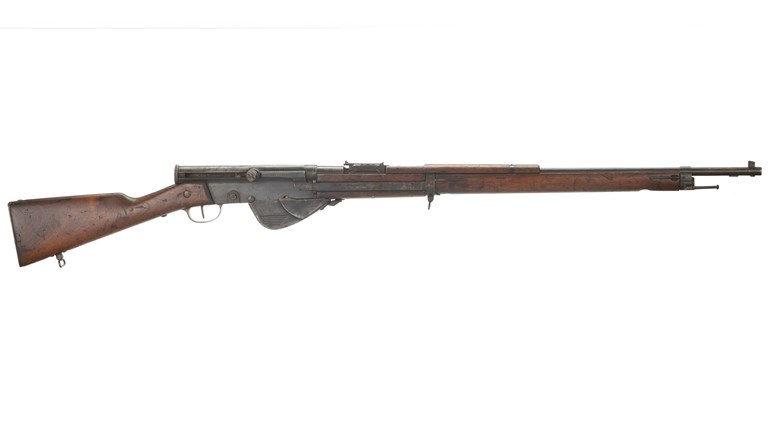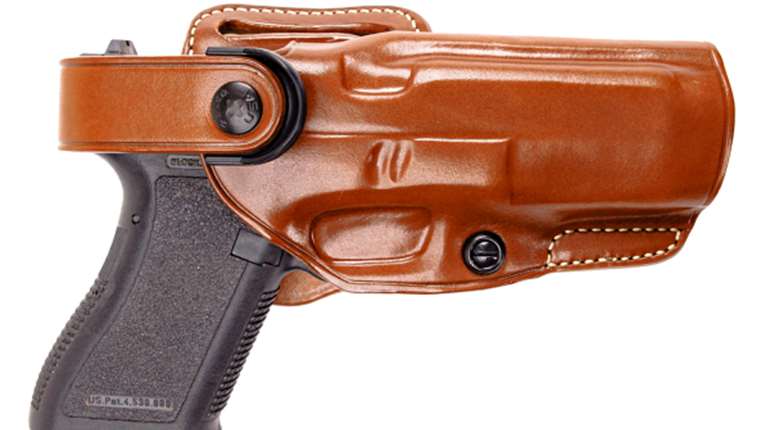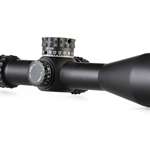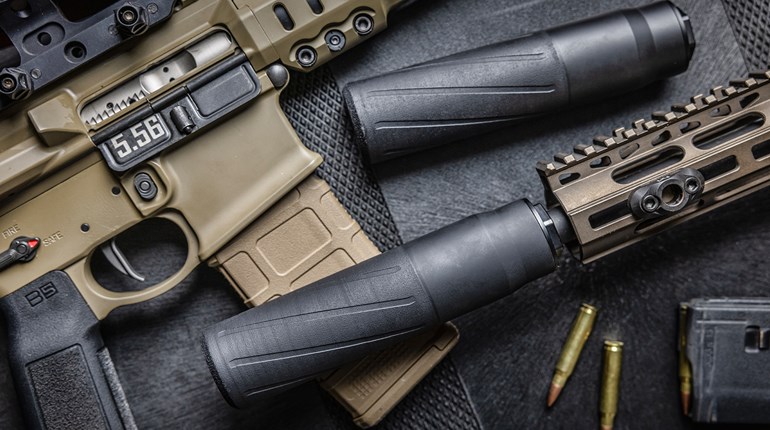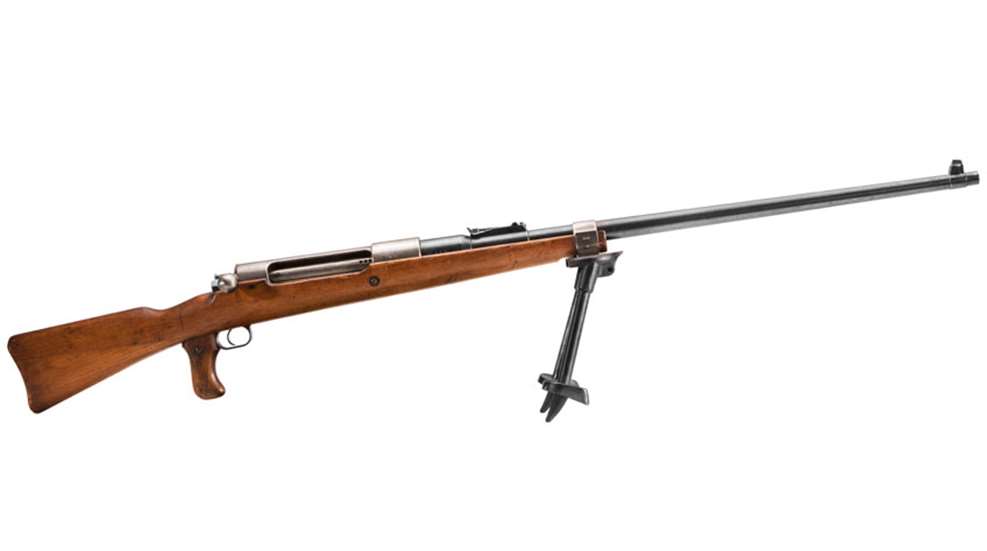
The hard-hitting power from the 13.2 mm Mauser Tank Gewehr provided foot soldiers with an effective shoulder-fired anti-tank rifle during the final months of WWI.
A century ago, the Imperial German Army was looking for a way to deal with an intimidating new Allied weapon. They encountered it for the first time on Sept. 15, 1916 at the Battle of Flers–Courcelette during the Franco-British Somme Offensive, and they found it to be rather difficult to deal with. The new weapon was the tank, and it was changing the face of war on the Western Front. While artillery fire and mortars could be used effectively against it, only a direct hit could produce a knock out. For the most part, the machine gun was ineffective against it because even the earliest tanks presented armor sufficient to stop small-arms fire.
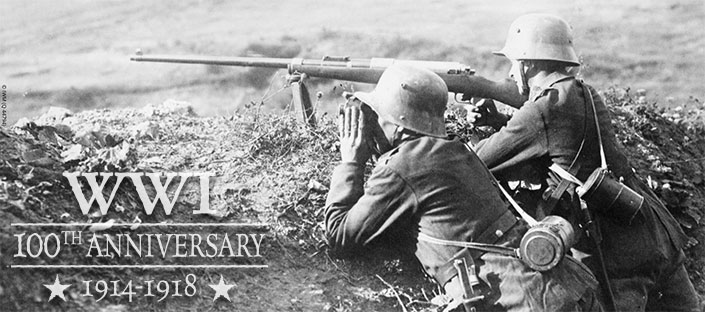
The experience of combat through the year 1917 introduced the Kaiser’s forces to more and better Allied tanks, calling attention to the need to develop some means of defeating them. Toward that end, the Germans first developed the K-bullet, a special 7.92×57 mm armor-piercing projectile with a tool-steel core that could penetrate the armor of the British Mark I and Mark II tanks. But then the British introduced the Mark IV tank, with its thicker armor, during the Battle of Messines Ridge in June 1917, and the K-bullet no longer provided the effective solution that it once had. For that reason, Germany sought to develop a “direct-fire” weapon capable of penetrating Mark IV armor.
Germany first recognized that something larger and more powerful than the 7.92 mm K-bullet would be necessary to confront the newer British armor, so the Polte ammunition factory in Magdeburg quickly developed something up to the task: the 13.2x92 mm semi-rimmed TuF cartridge (“Tank und Flieger” or “Tank and Aircraft”). Loaded with a 770-grain, steel-core boattail bullet, the 13.2 TuF offered the kind of penetrating power that could defeat the Mark IV’s armor. At first, the cartridge was intended for a scaled-up MG.08 machine gun to be used both on the ground and in the air, thus the “Tank und Flieger” designation, but in the end the development of that weapon did not move fast enough. By late 1917 though, Mauser Oberndorf had chambered a single-shot, cock-on-open, bolt-action, anti-armor rifle for 13.2 TuF. It was called the Mauser Tank Gewehr and it was basically a scaled-up Model 1898 rifle receiver with a Model 1889 extractor and a Model 1871 ejector.
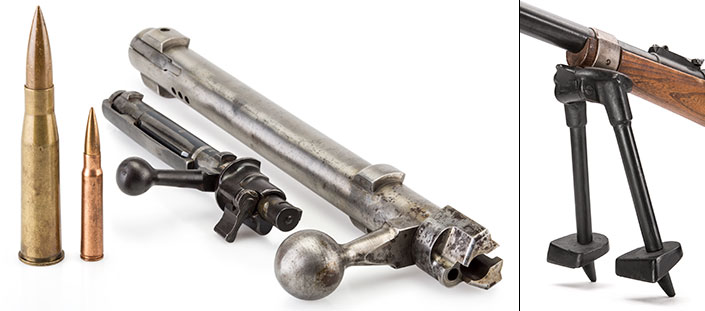
When the weapon went into production at Mauser on May 10, 1918, the first 300 guns assembled came equipped with a 33.9-inch long barrel and weighed 36.6 pounds. These early guns were also built with a standard Gew98 Mauser adjustable rear sight graduated to 2,000 meters, well beyond the Mauser Tank Gewehr’s effective range. Soon after production began though, Mauser introduced a second version that included a 37.8-inch long barrel and a revised rear sight graduated to a much more realistic 500 meters in 50-meter increments. This second-pattern T-Gewehr was also slightly lighter in weight at 34.8 pounds, not including the 3 pound, detachable bipod that could be mounted on a lug incorporated into the forward barrel band. The longer barrel of the second pattern Tank Gewehr produced a muzzle velocity of 2,650 fps—more than enough energy to punch a hole in a 22 mm (.86-inch) steel armor plate at 100 meters.
Because the Mauser Tank Gewehr weighs just under 40 pounds, is almost 5.5 feet long and is chambered for a massive semi-rimmed, bottleneck cartridge, the soldiers who had to drag it through the trenches of the Western front nicknamed it the “Elefant Gewehr”—the “Elephant Rifle.” Its girth and scale meant that it had to be operated in combat by a two-man team: a gunner carrying the rifle, and a loader carrying ammunition. Its cumbersome qualities notwithstanding, the T-Gewehr turned out to be a practical and economical weapon. By war’s end, Mauser Oberndorf had manufactured 15,800 of them, which is a quantity far greater than the total number of 13.2 mm TuF water-cooled machine guns would have ever reached.
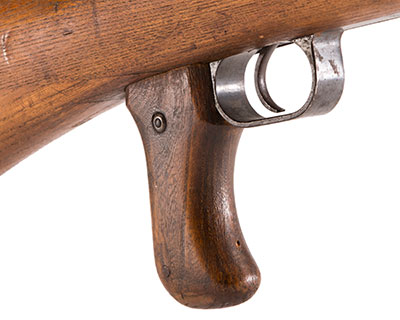
In this critical way, the production of the Mauser Tank Gewehr during the closing months of the Great War stands as a powerful example of what wartime necessity looks like: Germany had to innovate in response to a challenge presented by an unanticipated technological development. Mauser created a solution that was simple, durable and effective, and that solution was a battlefield success, albeit too little, too late to exert a meaningful influence over the outcome of the conflict.
But, with an agile and fast-moving two-man team, the Elefant Gewehr could advance with an attacking echelon and deliver effective fire against a target in a way that no mortar team ever could. That alone made it a valuable battlefield asset. Although its service during the First World War was confined to only the second half of 1918, the Mauser Tank Gewehr remained influential during the years that followed the November 11th Armistice. The Boys anti-tank rifle, the Soviet PTRD, and other similar designs proliferated and became centrally important parts of the readiness of every major world power as war clouds began to gather in the late 1930s.
Even now, as we proceed well into the 21st century, the faint echo of Mauser’s Elefant Gewehr can still be heard. When you admire the lines of Barrett’s M82A1 or M107A1 .50-caliber semi-automatic anti-material rifles, you can see in the spirit of the Mauser Tank Gewehr from a century prior. Everything old is new again.












